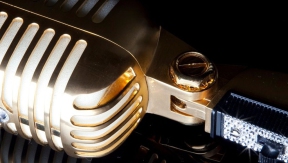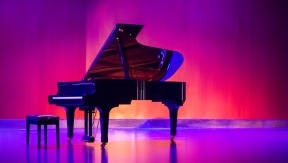
Understanding the different voice types
Although there are different categories of voices, divided according to tessiture, the process of “outputting” sound can be reduced to two main principles: the “chest voice” and the “head voice.”
Chest Voice
The chest voice (also known as Mechanism I, Modal voice, Heavy mechanism), is the most common of voices and the most natural for us as it is the one that we use for speaking (mostly for men, and a bit more variable for women).
It is also widely used for opera singers, as it is used in conjunction with a lowering of the larynx (a.k.a. the voice box) and as such allows for a strong resonance that allows the singer to overtake an orchestra.
The name chest voice, "voce di petto" in Italian, refers to the part of the body where the sound vibrations are concentrated when we use this type of voice. It is characterized by its powerful quality, its amplitude, its rich harmonics as well as its dark nature.
Head Voice
Sometimes referred to as "falsetto" in Italian, purists believe that the head voice is actually different from falsetto as falsetto is a “false” voice that imitates the qualities and sounds of the head voice and is often used when men try to imitate women singers.
The head voice (known also as Mechanism II) is the singing voice most commonly used by women and the one used when children speak or sing. It is more rare in men and even less so in amateur singers who have yet to master their voice.
Like the chest voice, the head voice is named after where it is found, in this case the upper part of the body. But unlike the chest voice, it isn’t as powerful and accurate, but it does prevail in clarity, expressiveness and purity.
Flageolet Voice
This fun name, derived from a type of fife (a small flute whose sound is similar to that of this voice’s namesake), covers the highest register, even beyond the head voice. For this reason it is only present in women. Extremely technical and difficult to perform, it is illustrated most spectacularly in the second aria of the Queen of the Night in The Magic Flute by Mozart.
Whistle Voice
This is another very special and unusual voice, which carries the pitch of notes even higher than the aforementioned flute voice, so much so that the voice is compared to a whistle. It is executed by a very particular morphology. Take Mariah Carey as an example. The famous singer, who has claimed to have nodules on the vocal cords, hits the high notes on her 1991 track Emotions, as her voice sounds very similar to that of a wind instrument.
Mixed voice
Found only in a man’s voice, the mixed voice does not designate a separate register but rather an intermediate state between the two main voice types, head and chest. It is used to lighten the tone in treble notes and allows for a more nuanced singing that is softer and more colorful.
Published on: 1 de abril de 2016



